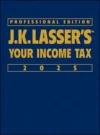Greater Opportunities for Self-Employed Individuals to Save for Retirement
You have a unique opportunity to shelter your business profits in a retirement plan and save money for your future. The tax law encourages this by allowing you to deduct contributions, defer tax on earnings, and in some cases, claim a tax credit for your efforts.
Contribution limits
Qualified retirement plan limits are adjusted annually for inflation, allowing you to contribute more each year if your income warrants it.
- Profit-sharing plans. The deduction limit for 2007 is $45,000; it will be $46,000 in 2008.
- Defined benefit (pension) plans. The benefit limit on which contributions are based for 2007 is $180,000; it will be $185,000 in 2008
- Compensation limit. The maximum amount of net earnings taken into account in figuring contributions and benefits in 2007 is $225,000; it will be $230,000 in 2008.
The limits for employee contributions to 401(k) plans (which self-employed individuals can make on their own behalf) remain the same in 2007 and 2008. The basic limit is $15,500. Those at least 50 years old by year-end can add another $5,000. Total salary reduction contributions cannot exceed net earnings.
Note: Self-employed individuals can use 401(k) plan even if there are no other participants. This plan can include a Roth feature to make after-tax contributions in order to build up tax-free retirement income.
Small employer plan
Small employers-those with no more than 100 employees–can claim a credit for the administrative costs of starting a plan if they have not had one in the past three years. The credit is 50% of costs up to $1,000, for a top credit of $500. The credit may be claimed for the first three years of the plan.
To qualify, the plan must cover at least one employee who is a not a highly-compensated employee. Thus, a self-employed individual with no employees cannot claim this credit.
New plan features for 2008
Starting in 2008, qualified plans can include new options:
- Automatic enrollment in 401(k) plans. You can include employees in the plan and commit them to minimum salary contributions unless they opt out. Adding them to the plan in this way will increase participation, ensure nondiscrimination requirements are met, and may allow greater contributions by self-employed individuals.
- In-service distributions. Plans can allow those age 62 and older to start receiving distributions from the company's plan even though they continue to work for the company (they need not be separated from service).
To take advantage of these and other new opportunities, consult with a plan expert.
Fair market value
What a willing buyer would pay to a willing seller when neither is under any compulsion to buy or sell.



